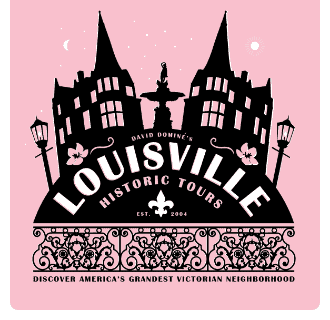The Louisville Historic District dates back to the late 1800s. During that time, what is now considered Old Louisville emerged as a suburb for the elite of Louisville, Kentucky, where bourbon barons, racetrack royalty, and titans of tobacco built impressive residences along Third and Fourth streets. Its heyday was short-lived, however, and wealthy families started moving out of the mansions in the early 1900s, leaving many homes and buildings to be transformed into boarding houses, cheap apartments, or business space. After World War II, the neighborhood saw a period of blight as white flight and the ravages of Urban Renewal took its toll. Today, many Victorian homes still function as multi-family dwellings, but a renewed interest in historic homes has seen a great deal of restoration in recent decades. Mansions are returning to single-family residences, and not surprising, the entire area has seen an influx of home-buyers and visitors as its fame has spread.
About the Louisville Historic District
When Louisville comes up in conversation, its famous baseball bats and native son Muhammad Ali usually come to mind—or else its mainstays of bourbon, horse racing, and tobacco. Most people don’t think of impressive 19th-century architecture or Victorian mansions; however, that has changed as the word has spread about a colorful downtown neighborhood known as “America’s Grandest Victorian Neighborhood.” Ranked as one of the largest historic districts in the nation, and the largest historic district in Louisville, this area is now referred to as Old Louisville. Since the 1970s, when the National Register of Historic Places began taking note of the cultural and architectural significance of this neighborhood, Old Louisville has seen a steady rise in positive national and international press coverage. Most recently, The New York Times recommended a walking tour of Old Louisville as the first thing not to miss during a visitor’s “36 Hours in Louisville.”
Location of the Louisville Historic District
Old Louisville is a transitional neighborhood located immediately adjacent to the downtown area, bounded by Kentucky Street to the north, the University of Louisville’s main campus to the south, I-65 to the east, and the CSX railroad tracks on the west. Home to large numbers of college students and apartment buildings, the outer edges of Old Louisville can be very crowded, while the core district—especially around the gaslamp enclaves of St. James Court and pedestrian-only thoroughfares such as Belgravia Court—retain the charm and tranquility of small-town Victorian America.
Louisville Historic District Architecture
With more than a thousand 19-century structures spread out over some 40 square blocks, it’s easy to see why Old Louisville counts as one of the most significant preservation districts in the nation. Impressive examples of Italianate, Gothic, Châteauesque, Richardsonian Romanesque, and Beaux Arts architecture make it one of the most striking Victorian neighborhoods as well. In addition to being known as “America’s Most Exuberant Neighborhood,” it has also gained a reputation as “America’s Most Haunted Neighborhood” due to the large number of ghostly legends and paranormal hotspots because of the sheer amount of Victorian-era mansions, murders, and mysteries
Visits to the Louisville Historic District
“We get local and out-of-town visitors alike, and I love showing off my old stomping grounds,” says David Dominé, an author who has written books about Old Louisville to promote heritage tourism and draw attention to its potential. “More and more, tourists are discovering this fascinating neighborhood and comparing it to better-know locales such as Savannah, New Orleans, and Charleston. If you love architecture and historic homes, you need to come to Old Louisville.”

